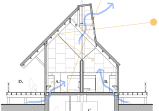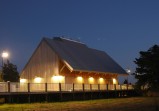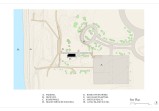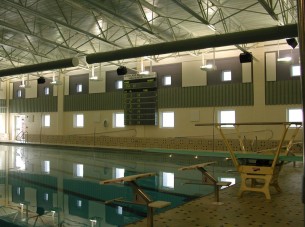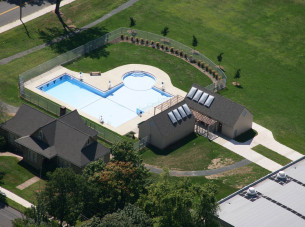An Inspiring Challenge
The word Hammonasset means, “where we dig holes in the ground.” Located on Long Island Sound in Madison, the State of Connecticut flagship state park that bears this name was once a sacred place for Native Americans to hunt and fish and has been an iconic respite for visitors since the 1920s.
In 2008, Connecticut’s Department of Energy and Environmental Protection (DEEP) asked TLBA to design a new beach services building for Hammonasset State Park to service one million beachgoers each year. Along with heavy visitor traffic, the building needed to account for extreme New England coastal weather with minimum maintenance.
Stirring Up Meaning
We drew inspiration from the land. This included the mile long beach, the inland and tidal marshes, wetlands and moraines. We also acknowledged the interventions made by man over the years in the form of rock jetties, boardwalk, campsites and previous structures, including an iconic clam shack from the past.
We quickly saw that a beautiful, highly functional structure would not be enough. To pay respect to the site, an artful approach to the work was equally as important. Our goal was to touch the earth as lightly as possible and seamlessly unite the structure with its natural surroundings.
Designing Sustainably
The building is placed at the center of the mile-long beach and above the flood plain to capture views of Long Island Sound and find protection from coastal floodwaters. Along with the landscape, summer breezes and the sun became a great source of inspiration and function. Taking advantage of these natural features provides passive ventilation and day lighting for the building.
The 2,500 square-foot structure is accompanied by 4,000 square feet of deck and boardwalk, linking the building to parking areas and the beach. Zinc-coated copper roofing, unfinished Western red cedar siding, teak windows and a simple timber frame provide durable natural materials requiring little maintenance over the life of the building. A concrete basement on woodpiles provides space to house ten composting waste systems, servicing twenty-four fixtures. This system saves the state 500,000 gallons of water each year, without waste discharge into the soils of Long Island Sound.
True sustainability dictates that decisions made during the design phase yield savings in materials, resources and manpower for the life of the building. These decisions are important with both the small details and grand gestures. In a building of this type, certain areas are subject to more use and wear than other areas and require replacement sooner. As such, materials such as rubber floor tiles, rather than sheet or interlocked products were selected. Wall panels above 8-feet are individually secured with exposed fasteners to allow select replacement. The base of the building has horizontally oriented siding, allowing simple replacement of high wear areas, without touching the remaining parts of the wall.
Dripping bathers and wind-driven rain are inevitable in a beach facility. Material selection acknowledges that the interior of the building will get wet. It’s less important to keep the water out, as it is that the building be able to dry out quickly and without damage.
Arriving at a Good Place
The building opened in 2010 and immediately had to prove its mettle, as the State was hit with record storms in its first three years. Record heat waves drove visits up over that time as well, and the building has delivered. We were proud to receive an “Innovative Architecture and Design Award” from Recreation Management Magazine in 2012. Seeing how beach-goers interact with the building gives us even greater satisfaction.
Our Partners, Materials and Resources
- Civil Engineer: Nathan L. Jacobson Associates
- Structural Engineer: Gibble Norden Champion Brown
- MEP Engineer: Consulting Engineering Services
- Contractor: Connecticut Carpentry
- Exterior: Glulam timber frame on concrete/wood pile foundation, cedar siding, composite decking, aluminum railings, teak windows, zinc-coated copper on structural insulating panel roof, composting waste system, passive ventilation, natural day-lighting.
- Interior: Rubber flooring, fiberglass reinforced panels, clear-finished MDO plywood and cedar.

